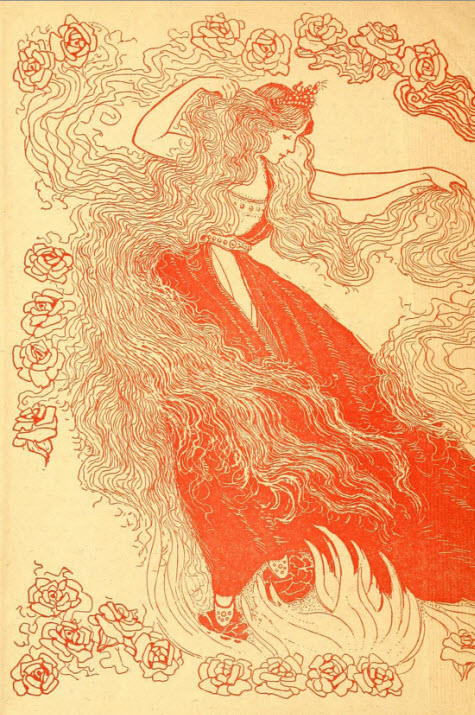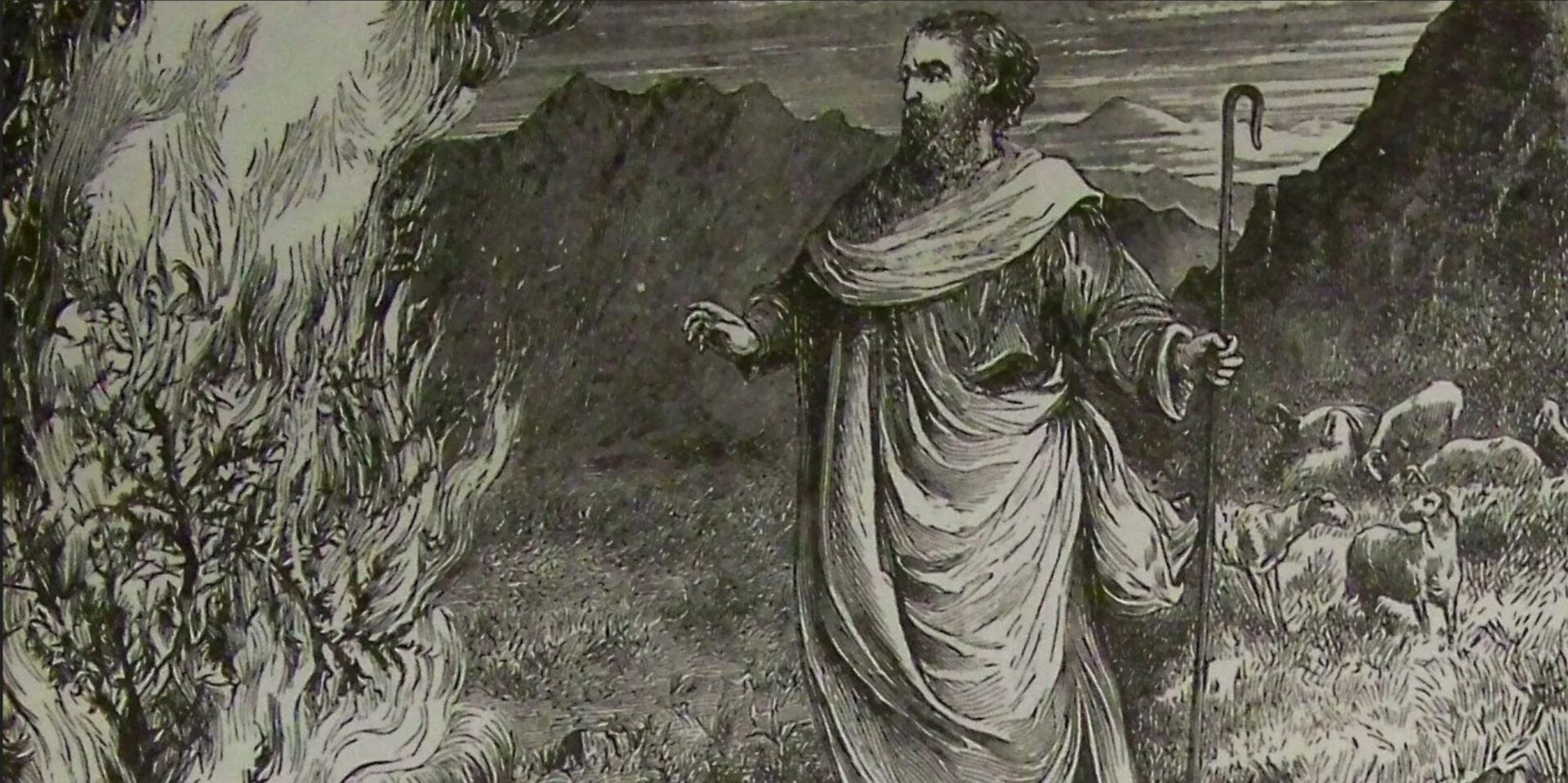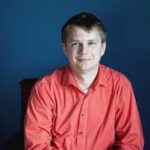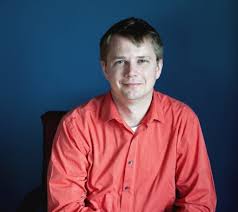Harrisburg, PA. In a passage from Lilith, George MacDonald describes how a properly attuned pair of human hearts perceives the world:
A wondrous change had passed upon the world—or was it not rather that a change more marvellous had taken place in us? Without light enough in the sky or the air to reveal anything, every heather-bush, every small shrub, every blade of grass was perfectly visible—either by light that went out from it, as fire from the bush Moses saw in the desert, or by light that went out of our eyes. Nothing cast a shadow; all things interchanged a little light. Every growing thing showed me, by its shape and colour, its indwelling idea. . . . The microcosm and macrocosm were at length attuned, at length in harmony! I lived in everything; everything entered and lived in me. To be aware of a thing, was to know its life at once and mine, to know whence we came, and where we were at home. . . . Now, the soul of everything I met came out to greet me and make friends with me, telling me we came from the same, and meant the same. . . . These were living stones—such in which I saw, not the intent alone, but the intender too; not the idea alone, but the imbodier present, the operant outsender: nothing in this kingdom was dead; nothing was mere; nothing only a thing.
As increasingly displaced and distracted people, we’ve forfeited much of this capacity to see each thing around us as having, simultaneously, a life and being of its own as well as a participation in our own life and being. This kind of sight comes only as a result of knowing “whence we came, and where we were at home.” In an approach that is similar to that of Wendell Berry, George MacDonald connects our sense of place with our ability to see the giftedness of being as a revelation of God’s presence.
When MacDonald describes a light that was internal to “every small shrub” like the “fire from the bush Moses saw in the desert,” he was no doubt aware of a long tradition associating the bestowal of being with the fire of the burning bush. Existence—a gift possessed by each thing around us—is possible only as a direct manifestation of God’s presence. Bruce Foltz in The Noetics of Nature cites Maximus the Confessor as saying that “the unspeakable and prodigious fire hidden in the essence of things, as in the bush, is the fire of divine love and the dazzling brilliance of His beauty inside every thing, . . . a shining forth, an epiphany, of the mysterious depths of being.”
In his essay “Poetry and Place,” Wendell Berry also points to the burning bush when expounding on this relationship between knowing where we are and seeing what truly surrounds us:
For the old poets, the question of the whereabouts of an action was not just social and geographical; it was hierarchical. It was, so to speak, both horizontal and vertical. . . . In the story of Moses and the burning bush we see the crossing of these two axes in such a way as to define Moses’ whereabouts with the gravest exactitude. The voice from the bush gives him his worldly location: “the place whereon thou standest is holy ground”—but not until it has placed him properly in the hierarchical order (he is merely a man): “put off thy shoes from off thy feet.”

Wendell Berry and George MacDonald occupy an ancient tradition recognizing the burning bush as an image of what it means to know our places and to be granted the eyes to see what exists. As Saint Maximos (and many other ancient church fathers) point out, there is an “unspeakable and prodigious fire hidden in the essence of things,” but we must know our place in order to see this fire. Berry connects our place with both a horizontal and a vertical aspect, emphasizing dimensions that we have largely lost.
Human hearts and God’s throne are coterminous by design, and this divinely-fashioned overlap is the most basic shape-giving aspect of our world. Without this understanding of our place in the cosmos, all of our public and private vocations suffer. As Stephen Clark argues in Ancient Mediterranean Philosophy, “In the merely material world, there are no privileged places, times or scales: there is nowhere that is uniquely here, no time that is uniquely now, no reason to suggest that the human scale of things is especially important.”
This ability to see the ground of reality as both within our heart and at the center of the cosmos allows us to fulfill our highest purpose—to function as the hinge point or two-way street between the ground of Being and all that is (recieving the world in each moment as a gift from God and returning thanks in concert with everything of which we are a part).
As image bearers, we have a role in the revelation of God to the cosmos. As priest-kings, we also offer up the cosmos back to God in worship and thanks. This same position makes us the microcosms that so many sages have declared us to be: every human touches both heaven and earth, the transcendent and the imminent, in a way that enables recognition and communion to take place. Human beings constitute “what Maximus the Confessor called the priestly ‘methorios’ (the boundary or frontier) between the physical and the spiritual realms” (David Bentley Hart in “The Devil’s March”). When our hearts cannot see God (and who has the pure heart required for this?) all of creation suffers and shares in our spiritual blindness.
Our ability to perceive what is most fundamentally present and real to us is called the nous in Greek. This term is often translated in English as mind or intellect, but nous also carries ancient meanings of common sense, practical intelligence or an intuitive sight. In Timaeus (30), Plato divided humans into nous (mind), psychë (soul), and söma (body), with nous being our greatest capacity—keeping us in contact with the most fundamental reality of pneuma (spirit), within which both our soul and our body exist. Nous is described by Saint Makarios as the “eye of the heart” and by Saint Diadochos as the “innermost aspect of the heart” (The Philokalia). These contemplatives also call our nous the “single eye” and associate it with Christ’s teaching in Matthew 6:22-23 (ESV): “The eye is the lamp of the body. So, if your eye is healthy, your whole body will be full of light, but if your eye is bad, your whole body will be full of darkness. If then the light in you is darkness, how great is the darkness!”
Bruce Foltz concludes that Greek philosophers held noetic knowledge to be the highest kind of knowledge, a knowledge that “connected the visible with the invisible”:
The unencumbered exercise of that highest faculty of alertness and heedfulness and comprehension for which they reserved the name, “nous,” a noun that we can render variously as intellectual intuition, immediate apprehension, mans or mind, or in Jacob Klein’s plainer (and hence, more incisive) rendering, prepared openness, attentive consciousness. . . . It is a heedful awareness that is “open” to the presence of the invisible within the visible, of a kind of divinity within nature.
In ancient guides to prayer such as The Philokalia, the instruction was often given to “seat your mind within your heart” or to “let your mind descend into your heart” so that you can perceive what is real from your chest or the core of your person. This intuitive or direct perception of reality by our nous—when it is at home within a quieted and attentive heart—is supposed to direct all of our other human capacities such as our heart’s affections or emotions, our rational thought (seated in our heads) and our appetites or passions (seated in our bellies). However, we typically move through our lives with these powers out of alignment so that our rational thoughts, our emotions, or our appetites take the helm (instead of serving as co-pilots where they actually do us the greatest good).
Augustine described God as “more inward than my innermost and higher than my uppermost” (“interior intimo meo et superior summo meo,” Confessions 3.6.11). He also says: “Where in my memory do you abide, O Lord? . . . What kind of sanctuary have you built for yourself? You have done this honor to my memory to take up your abode in it” (10.25.36). Such microcosmic claims—simultaneously anthropological and cosmological—are common within the teachings of sages across human cultures. Nonetheless, modern understandings of our cosmos fence these kinds of claims out from the realm of public or real knowledge—insisting that we must separate the objective from the subjective so that our nous cannot help us to see the shape of our world and how it moves.
To claim that every human heart overlaps with the throne of God is a structural claim. To say that this claim is more essential to understanding the architecture of the universe than any of the beautiful scientific models (from Leucippus, Ptolemy, Copernicus, Newton, Einstein, Planck, Heisenberg or Hawking) is not to devalue modern science but to give science a place within the world of meaning (as every great scientist has acknowledged). Properly understood, this metaphysical claim provides science the firm footing and integrated purpose that it has always depended upon within the realms of cosmology, anthropology, and theology.
The fact that God has linked every human heart to His presence at the center and summit of all created things gives the cosmos not only its most fundamental arrangement but also its most essential energies, movements, and purposes. This structural overlap between human hearts and God’s presence does not allow for a static cosmos. Dante references an ancient classical and Christian tradition when saying it is “love that moves the sun and other stars” (The Divine Comedy, “Paradiso,” XXXIII.145). This cosmic movement takes place independently of us, but it is nonetheless mysteriously perfected or made wholly manifest when human hearts recognize it and participate with it, calling it forth with encores of thanks and praise. Plutarch writes in De Tranquillitate Animi:
The universe is a most holy temple and . . . into it man is introduced through birth as a spectator, not of hand-made or immovable images, but of those sensible representations of knowable things that the divine mind, says Plato, has revealed, . . . the beginnings of life and motion, sun and moon and stars, rivers which ever discharge fresh water, and earth which sends forth nourishment for plants and animals. Since life is a most perfect initiation into these things and a ritual celebration of them.
This image is clearly echoed in multiple places by C.S. Lewis. To give one example (Studies in Medieval and Renaissance Literature):
The motions of the universe are to be conceived not as those of a machine or even an army, but rather as a dance, a festival, a symphony, a ritual, a carnival, or all these in one. They are the unimpeded movement of the most perfect impulse towards the most perfect object.
Seeing the world in this way parallels and depends upon seeing each other in this way. In fact, some of the best images regarding what is truly at work in our noetic contemplation of the world is best described by C.S. Lewis when he is talking about how we gaze upon one another within “heaven itself where the very multitude of the blessed (which no man can number) increases the fruition which each of us has of God.” Specifically, Lewis claims that we cannot see God fully without each other:
For every soul, seeing Him in her own way, doubtless communicates that unique vision to all the rest. That, says an old author, is why the Seraphim in Isaiah’s vision are crying ‘Holy, Holy, Holy’ to one another (Isaiah 6:3). The more we thus share the Heavenly Bread between us, the more we shall have. (The Four Loves)
Being embodied creatures, it is a simple parallel claim to extend this image to all the details of our places. Our entire vision of the world around us reveals God to us, and we cannot fully see God without also seeing His creation. As Alexander Schmemann puts it in For the Life of the World, the “proper function” of all matter (such as “true, full, adequate water”) is to be a “means of communion with and knowledge of God.”
As Paul declares, our body is a temple. It is a small step from there to recognize Eden as life with God in every place where our hearts align with God’s throne. Around every human there is a place shaped like the ancient cosmos—with a living earth beneath us and with a tent-like firmament overhead filled with the slow movements of living lights. This cosmic home is not in tension with globalism or space travel. We humans will always find that this basic shape follows us wherever we go. In order to recognize the fundamental nature of ourselves and our world, our call will always be to return to this shape—to our bodies, to our hearts, and to our places in the middle of a temple-garden.
Place is only made possible in its fullest sense (as a metaphysical and anthropological category) by human noetic knowledge. “The order of nature proposes a human order in harmony with it,” is how Wendell Berry states this in “Poetry and Place.” To truly dwell in a place involves the integration of our nous and cosmos before every shrub such that they each cast a divine light. Such insights are standard parts of all ancient wisdom. Clark gives several examples in Ancient Mediterranean Philosophy. He cites the pagan Parmenides saying that “we are in the center of the world always, moment after moment.” In the Abrahamic tradition, Clark refers to a Talmudic saying with this question and answer: “Why is God called ‘the Place’ (hamaqom)? Because the universe is located in Him, not He in the universe.”
Wendell Berry’s essay “The Presence of Nature in the Natural World: A Long Conversation” makes the case that “Pope is the last of the English poets to be mindful of Nature as a mother, maker, teacher, giver of patterns and standards, and judge.” This separation from the presence of Nature has left us tragically incapable of seeing the fullness of our places:
We have lost the old apprehension of Nature as a being accessible to imagination, linking Heaven and Earth, making and informing the incarnate creation, and requiring of humanity an obedience at once worshipful, ethical, and economic. Her stern instruction . . . that we humans have a rightful but responsible place in the order of things, has disappeared, and has been absent a long time from working consciousness and our formal schooling.
This blindness is a result of many forces including industrialism. More broadly, it can be traced to the Enlightenment and the rise of modern science. This is not to say that modern science must be abandoned, however. At both its classical and Christian roots, science was never at odds with noetic knowledge. Foltz gives an example in The Noetics of Nature:
The great materialist poem of Lucretius, De Rerum Natura, “On the Nature of Things,” itself a classic of nature writing, draws us back into our experience of lived nature, ever attentive to the beauty of the “prescribed” and “proper” ways of nature, the ways “specific” to the things themselves, and always reverent toward the reality of the divine. In contrast, modern materialism not only fails to “save the phenomena” of nature as we encounter them in our experience—at the same time, and opposite to Lucretius, glibly assuming that things themselves have no nature—but actually declares war upon them through an unrelenting reductionism. For as Husserl emphasized in his Crisis of the European Sciences, the modern natural sciences have failed to maintain the bridges between lived reality and scientific conception. [This has rendered] modern materialism radically different from any modality in which nature has been experienced and understood, virtually anywhere outside the modern West.
Modern science is a brief moment in the human experience, and close observation of the physical world has not always led to a dismissal of realities that are visible only to the single eye of the heart. Within his day, Plato easily reconciled the apparently conflicting observations of the heavens by the new philosophers with the older mythologies of pious pagans about the divine life of stars. Plato taught that the stars are moved (as are all things) by unseen realities and that their visible movements (although imperfect like all the rest of the visible world) nonetheless reveal perfect and invisible realities at work. Alan Scott summarizes Plato’s teaching:
True astronomy is not concerned merely with what is seen in heaven but with the understanding of what lies behind what is seen. . . . To the mind [nous] which understood properly, there was true harmony in heaven even if this was not possible for the material bodies of heaven, even as there is exactness in geometry though it is not part of any merely visible diagram. (Origen and the Life of the Stars: A History of an Idea)
To again offer science a home amid the goodness of human lives that are lived in contact with their garden sanctuaries, we must renovate our hearts and allow our ambition and our reason to be guided by our nous. In our contemporary world, this usually feels about as likely as finding the bottom of a social media feed. However, Wendell Berry and many others have pointed out that our contemporary hubris is actually a hopeless (and quite possibly short-lived) flight from reality. Most of our modern infatuations are likely enough to appear in the rearview mirror of human history as minor aberrations. Regardless, even in the midst of this sad era of cold, objective ambition, the possibility of grateful participation in the cosmic life of creation remains for each of us. We do not want to miss the fire of divine light on offer to those who find themselves on holy ground and remove their shoes.







